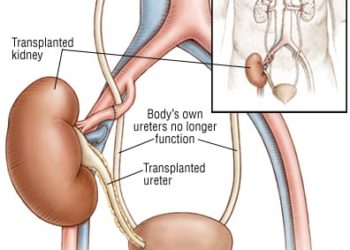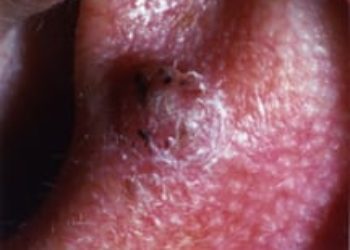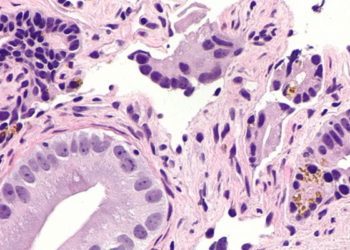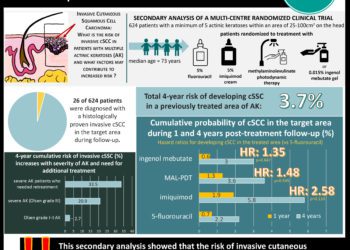Quick Take: Association of Disease Recurrence With Survival Outcomes in Patients With Cutaneous Squamous Cell Carcinoma of the Head and Neck Treated With Multimodality Therapy
Cutaneous squamous cell carcinoma of the head and neck (cSCC-HN) generally has a favorable prognosis, however, there is a subset of patients who experience a more aggressive clinical course. A previous study showed that patients with aggressive cSCC-HN and who are chronically immunosuppressed have a lower rate of progression-free survival following surgery and postoperative radiotherapy (RT) as compared to immunocompetent patients. However, outcomes of cSCC-HN patients following disease recurrence after surgery and postoperative RT are unknown. In this retrospective cohort study, 205 patients who underwent surgical resection and postoperative RT for primary or recurrent stage I to IV (non-metastatic) cSCC-HN were studied to assess overall survival. Of the original cohort, 55.6% were immunosuppressed, defined as patients who received a diagnosis of chronic hematologic malignant neoplasm, HIV/ AIDs, or were treated with immunosuppressive therapy for organ transplantation at least 6 months prior to diagnosis of cSCC-HN. Overall, 72 patients (63 men and 9 women, median age 71 years) developed disease recurrence. The median time to any disease recurrence after completing postoperative RT was 10.1 months (range 1.4 months to 57.4 months) in immunocompetent patients and 9.1 months (range 1.0 months to 77.4 months) in immunosuppressed patients. Researchers found that, after any recurrence, the 1-year overall survival was 43.2% (95% CI 30.9% to 55.4%) and median survival was 8.4 months for the entire cohort. There was no statistically significant difference in median survival between immunocompetent and immunosuppressed patients (12.9 months vs. 8.0 months, p=0.90). Of the 45 patients for whom data on salvage treatment was available, patients who were not amenable to surgical salvage had significantly lower median cumulative incidence of survival compared with those who were amenable to surgical salvage (4.7 months vs. 26.1 months, p=0.01). Survival was not significantly different between immunocompetent and immunosuppressed patients with unsalvageable disease (5.0 months vs. 3.9 months, p=0.09). In summary, this study illustrates the poor overall survival of cSCC-HN patients who experience disease recurrence, regardless of immune status. Survival rates are especially low for patients who were not amenable to surgical salvage.
Click to read the study in JAMA Dermatology
Image: PD
©2019 2 Minute Medicine, Inc. All rights reserved. No works may be reproduced without expressed written consent from 2 Minute Medicine, Inc. Inquire about licensing here. No article should be construed as medical advice and is not intended as such by the authors or by 2 Minute Medicine, Inc.







